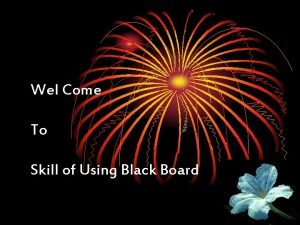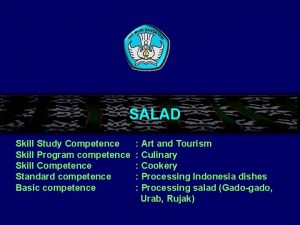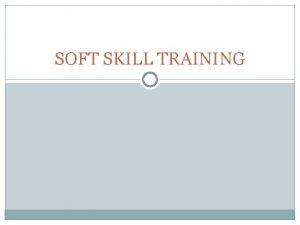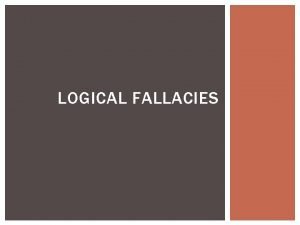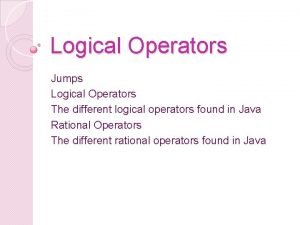Logical Communication Skill Training Logical Communication From Logical









- Slides: 9

Logical Communication Skill Training Logical Communication - From Logical Thinking, Hanako By, Hyungkyu Shin 2010 July 01

Table of Contents 1. Communicating Effectively A. Considerations B. Factors 2. Logical Communication Tools A. MECE frameworks B. So What? & Why So? 3. Organization of Logic A. Vertical / Horizontal Relations B. Basic Patterns 4. Presenting Your Logic

1. Communicating Effectively 1 -A Communication is giving an appropriate answer to a task Check 1 : Theme The THEME that must answered Focus on the subject, Not what you think is important Check 2 : Expectation Think what you expect from the listener, the purpose. Examples of expected reactions are, 1. make’em understand 2. make’em judge, give advice 3. make’em act Check theme, purpose before you prepare to communicate

1. Communicating Effectively 1 -B An appropriate answer must have, the main point of the answer Thesis 1. expecting an action 2. simply giving judgment, feedback Supporting Facts WHAT The reasons that lead to thesis 1. maybe a fact 2. or a judgment WHY Specific action suggested Method If, the answer is expecting an action HOW

2. Logical Communication Tools – MECE frame works 2 -A Mutually Exclusive and Collectively Exhaustive : Eliminating redundancy, omission and error 3 Cs 4 Ps Customer Competitor Product Company Flow Step Price Others Efficient, Effective step 1 step 2 step 3 Quantity, Quality Fact, Opinion Place Promotion

2. Logical Communication Tools – So What? & Why So? 2 -B Preventing the logical leap task Thesis So what? Support 1 Why so? Support 2 Support 3 Why so? So what? fact fact fact So What? : must accurately explain or summarize what the data is saying Why So? : the main idea must be well supported by appropriate reasons and facts

3. Organization of Logic – Vertical / Horizontal Relations 3 -A Vertically, proof with So What? & Why So? Horizontally, proof with MECE Task answer Thesis So what? Support 1 Support 2 So what? fact MECE Why so? Support 3 Why so? MECE fact fact MECE How much vertical/horizontal? Until they understand!! fact

3. Organization of Logic – Basic Patterns 3 -B Parallel Pattern and Manual Pattern Parallel Manual Task Thesis Reason / Method For reporting complicated facts or analysis (objective) Supported by supporting details (MECE) Thesis Fact Rationale Implication To prove your theory or get feedback from your theory (subjective)

4. Presenting Your Logic 4 Whether presenting your thesis first or last, must make sure the audience know theme, and purpose of your presentation Thesis First Task Thesis Last purpose Thesis Reason / Method Task purpose Thesis Reason / Method Reason / Method
 Soft skills definition
Soft skills definition Logical form and logical equivalence
Logical form and logical equivalence Kesetaraan logis adalah
Kesetaraan logis adalah Interpersonal conflict resolution skills
Interpersonal conflict resolution skills Training is expensive without training it is more expensive
Training is expensive without training it is more expensive Perbedaan on the job training dan off the job training
Perbedaan on the job training dan off the job training Aggression replacement training facilitator training
Aggression replacement training facilitator training Logical communication
Logical communication Logical communication
Logical communication Components of black board skill
Components of black board skill









